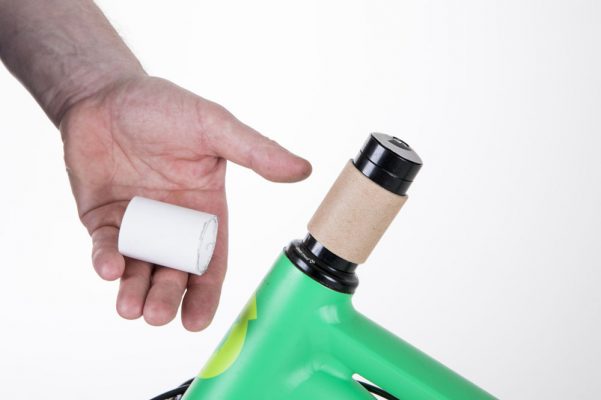Follow our budget-friendly packing-a-bike-tips
Flying with you bike this summer? Keep your costs from soaring by following our budget-friendly packing-a-bike tips.
>>> Hiding a GoPro in bike bag to find out how airlines treat bikes
When jetting off on a riding holiday it’s always makes sense to transport your bike in a proper bike bag and one of the best is the EVOC Bike Travel Bag Pro. It can accommodate any type of bike, offers excellent protection and is dead easy to use but at £469 it’s a considered purchase. If you can’t stretch to the EVOC or only travel infrequently, a better idea is to buy a budget bike bag and follow our upgrade plan.
Spotless
Our first tip for travelling with your bike is to make sure your bike and bag are clean. Some countries don’t like you taking soil or any organic matter across borders and any dust or debris in the bottom of your bag, is going to get everywhere, contaminating the bearings and chain.
Tyres and tubes
At check-in you often get asked if you’ve let your tyres down but you don’t have to. The increase in pressure when flying at 40,000 feet is so minimal it’s unlikely to cause problems. And keeping you tyres inflated means you don’t gave to bother pumping them up again when you reach you destination.

Rear derailleur
It’s expensive to replace so always remove the rear mech from the frame. Wrap it in bubble warp and stash securely between the chainstays, use tape or zip-tie to hold it in place. Also take a spare hanger with you on a overseas trip, these are notoriously hard to find if you’re going somewhere off the beaten track.
Axle spacers
With the advent of through axles on modern mountain bikes, you don’t really need to fit spacers between you frame and fork but you should always thread the axles in place when travelling.

Disc brakes
Even a slight whack can ding a disc rotor, so remove both before travelling. Place them in a large Ziploc bag sandwiched between two pieces of stiff card.
To stop the brake caliper pistons getting pushed out too far, place the original plastic spacers between the disc pads. Thrown those away? Use a thin piece of carboard secured with an elastic band.

Stem and handlebar
If you’ve spent ages getting the bar angle just right then we’d remove both the stem and bar during packing. Stash them in a pouch made from bubble wrap secured with elastic bands. Make a spacer from a cardboard or plastic waste pipe, and place under your top cap. This stops the headset/fork rattling around and all that dirt floating around in the bottom of your bike bag, contaminating the bearings.

Frame lagging
Pipe insulation is great for protecting delicate frame tubes and fork lowers. This comes in different diameters, costs about 75p for two meters and can be cut to length. Try a plumber’s merchant, they carry more stock than the DIY stores.
Milk the weight limit
The maximum weight limit for a bike bag is 32kg so you may be able to cram a bit of spare kit into the bag – like shoes, helmet and a hydration pack. If you have knee pads and elbow pads secure these around the frame tubes.

DIY frame pad
Make a frame pad from a wedge-shaped piece of carboard, lined with bubble wrap, and wrap it round the top and down tubes. Anchor a large rubber band or Velcro strap through the middle to attach your handlebar.

Budget padding
Add extra protection to a standard bike bag by simply slotting in a couple of sheets of cardboard. Alternatively try interlocking floor mat (six large pieces cost about a £10) or Transit Blanket. These grey blankets are used by removal companies, don’t scratch paintwork and only cost £3-4 each.
Flying with your bike: need to know
Bag hire: If you only do the odd trip abroad it may make sense to hire a bike bag. Bikebox Online offers bike box rental from £6 per day and you can collect from 25 hubs dotted around the UK or get it delivered to your door for £15 (each way). Go to bikebox-online.co.uk for more details.
Bike hire: Depending who you fly with airline charges can be up to £100 each way to transport your bike. With this in mind consider hiring a bike, a six-day rental in Les Gets in France for example, is only €300-400.
Dangerous goods: If you use CO2 cartridges to inflate your tyres you won’t be able to take them on a plane – check you backpack and saddle bag for any stray ones. Most airlines also have a limit for lithium-ion batteries of 160wh, so that rules out most 500wh E-bike batteries, although it’s unlikely you’ll be able to get a 25kg e-bike onboard due to the weight limit.
Go postal: There are several on-line baggage companies that offer door-to-door delivery services, which can work out cheaper than the excess baggage fees. Most insist the bike is boxed but your bike is collected from your home and them delivered to your destination. Try unibaggage.com, luggagemule.co.uk or sherpr.com.
Bike travel fees
Airline > Cost one way > Weight Limit
Aer Lingus > €50 > 23kg
easyJet > £42 > 32kg
Ryanair > £60 > 30kg
British Airways > £65 > 32kg
American Airlines > $150 > 70lbs
Lufthansa > €80 > 32kg
United > $200 > 70lbs
Virgin > £65 > 23kg




